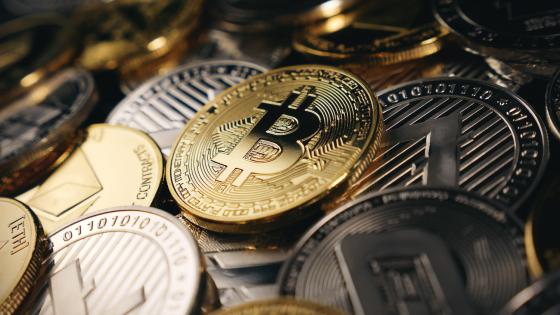Since the introduction of Bitcoin at the beginning of 2009, the number of cryptocurrencies has soared to about 15,000. Although this fragmentation is inherent to the decentralised consensus mechanisms of the cryptoverse, in many cases the currencies are mere replicas with very low trading volumes in search of unwary investors. Presently, the top 20 cryptoassets account for roughly 90% of the total market capitalisation of the asset class (Boissay et al. 2022). Among them, stablecoins were designed to preserve a fixed parity with fiat reserve currencies (or other reference assets), with a view to remedying the ostensible volatility of the original cryptoassets – a critical obstacle to their aspirations to replace conventional means of payment and promote the emergence of new forms of money (Landau and Genais 2019).
Stablecoins, however, face an internal inconsistency: in order to preserve their stability, based on a currency-board type arrangement, they need to limit leverage and secondary money creation.
Varieties
More than a decade after their launch, traditional cryptos have so far failed to substitute the functions of money (Danielsson 2018). Lacking intrinsic economic value, their price is inherently volatile and tied exclusively to fluctuations in their demand. At the same time, their decentralised nature implies that their applications cannot escalate without high fees, congestion, or security risks (the so-called Buterin’s trilemma). As a result, with the exception of informal or openly illegal activities, transactions costs prevent Bitcoin-like currencies from becoming a reliable means of payment.
Stablecoins are a different species altogether. For starters, they come in two flavours. ‘Algorithmic’ stablecoins are inherently fragile financial transgenics based on complex smart contracts that automatically defend the peg by buying and selling against an associated ‘governance token’ – a scheme of ‘endogenous collateral’ full of circularities and reminiscent of a Ponzi game, as the Terra-Luna fiasco vividly illustrated (Landau 2022).
‘Custodial’ stablecoins, by contrast, follow the principles of a traditional currency board: the supply (of coins) should be fully matched by a stock of high-quality liquid assets (HQLAs) denominated in the peg currency, so that holders of coins can readily exchange them one to one on demand.
Two conditions are needed for this scheme to work.
The first one is obvious: there are no substitutes for actual reserve assets, the backing should be real and easily verifiable. In practice, this is not always the case. For example, doubts about the backing of Tether
– the leading stablecoin by market capitalisation – led last year to the company's belated revelation that less than half of the stock was actually backed by HQLAs,
while a relevant portion consisted in commercial papers and other assets that can suffer significant losses in an episode of massive forced sales. It was precisely those concerns that, after the collapse of the Terra/Luna system, triggered a classic run against on Tether that led to a temporary break of its peg and to the loss of more than 20% of its liquid reserves – highlighting the importance of full, transparent, and liquid backing.
The currency board analogy
The second condition is more subtle and less evident: to perform strictly as pegs, stablecoins should not be on-lent. If they were, part of these loans would go to new deposits and so forth, multiplying the stock of crypto-denominated assets and exposing the whole scheme to a run that exceeds its backing.
History is full of episodes where incentives of issuers of unregulated private moneys led them to invest in riskier, lower-quality assets. Examples include the ‘wild cats’ of the free banking experience in 19th century America (Gorton and Zhang 2022). Difficulties of accepting at par the notes of different banks plagued the experience not only with obstructions to day-to-day transactions, but also with frequent confidence crises. Lessons from these episodes flagged the need to regulate the operation of private issuers with notes fully backed by Treasury bonds in the National Bank Act of 1863, the origin of a national uniform currency. Similar lessons were previously learned after the creation of the Bank of Amsterdam in 1609 (Frost et al. 2020).
However, the point we want to highlight goes beyond the quality of the loans, important as it is for the sustainability of an unregulated private credit system. Instead, the ‘no-lending criterion’ is closely associated with the currency board analogy. Perhaps the most notable misunderstanding about a currency board relates to its resilience against a run: the fact that narrow money is fully backed by reserves does not imply that, in the event of a run, reserves will be used to purchase base money while preserving the currency board parity through the very end. Indeed, in currency runs transactional balances tend to be stable, whereas it is broad money (savings and term deposits that usually far exceed narrow money) that goes against reserves.
This was one of the lessons learned the hard way during Argentina’s imperfect and ultimately failed currency board (de la Torre et al. 2003): if there is secondary creation of inside money, the backing will prove to be badly inadequate. This too is the view underlying the focus on higher monetary aggregates than M0 (“the size of domestic financial liabilities that could potentially be converted into foreign currency”) emphasised by Obstfeld et al. (2010) to explain the growth of international reserves in emerging economies.
It follows that, as with the textbook currency board, a run-proof stablecoin should be no more than a ‘narrow’ bank.
What’s the point?
Stablecoins are primarily used to facilitate trading and lending in the decentralised finance (DeFi) ecosystem, and as a vehicle currency to avoid the round trip to and from fiat moneys. That is why, despite still being a relatively minor part of the total crypto universe (roughly 15% as of this writing, after a rapid increase since early 2021), their turnover generally dwarfs that of unbacked cryptos.
With the declared objective of eliminating middlemen and reducing intermediation costs, DeFi financial products and services are mostly self-referential and ‘endogamic’ – lending cryptocurrencies posting another one as collateral, insuring against hacking attacks, lost private keys, smart contract failures, or other cyber risks – that is, ring-fenced from the real economy. And, due to the lack of credit information from anonymous borrowers, they rest on overcollateralisation, which in turn compounds their pro-cyclical nature and conspires against financial inclusion (Aramonte et al. 2022).
Since they lack a ‘real’ use but pose a potential systemic financial risk, many observers have suggested that they should be banned altogether (Allen 2022). That said, because of network effects and the winner-takes-all nature of the mix of issuers or wallet providers with social or commercial platforms, stablecoins have the potential to escalate rapidly to become widely adopted as a means of payment and to impact on the workings of the current monetary and credit system.
Overall, however, the growing consensus is that monetary authorities should not embrace technological innovation ‘ignoring or distorting money fundamentals’ and lacking an adequate regulation framework (Landau 2022). Issuers should be strictly regulated if they are to gain (explicit or implicit) access to the financial system safety net (President’s Working Group on Financial Markets, FDIC and OCC 2021, FSB 2022). Indeed, following the principle of ‘same risks and similar business model, equivalent regulation’, alternative regulatory schemes under study go from treating issuers as transactional banks under current regulation to demanding a full backing in HQLAs (even central bank reserves) that assimilates them to a ‘narrow bank’ or a money market fund (Bank of England 2021). Depending on the source of funds (for example, a potential substitution coming from commercial bank deposits), some of these schemes could potentially change the topology of the current monetary and credit system, with safe, payments-based activities segregated from banks' riskier credit-provision activities (Adrian and Griffolli-Mancini 2019, Haldane 2021). Although this could remove some of the fragilities faced by the fractional reserve systems, it also constrains the use of capital with the risks of fuelling credit disintermediation (Liao and Caramichael 2021, Makarov and Schoar 2022).
Stablecoins may play a role in the payments landscape, but they need to be well designed and regulated in order not to defeat their purpose (Bindseil et al, 2022). Even then, a question remains. If a ‘narrow’ stablecoin is merely a digital avatar of a stock of liquid reserves in fiduciary money, it is hard to make a case for a purpose that cannot be met by central bank digital currencies or fast payment systems. And, as is often the case in finance (think, for example, of the misleading risk metrics of the CDOs in the early 2000s, or the algorithmic lunacy of the failed Terra/Luna scheme), the promise of technological innovation sometimes masks risks or inconsistencies that cannot be regulated without defeating the promise.
References
Adrian, T and T Mancini Griffoli (2019), “The Rise Digital Money”, IMF Fintech Note 19/01.
Aramonte, S, W Huang and A Schrimpf (2022), “Defi risks and the decentralization illusion”, BIS Quarterly Review, December.
Bindseil, U, P Papsdorf and J Schaaf (2022), “The Bitcoin Challenge: How to tame a digital predator”, VoxEU.org, 7 January.
Bank of England (2021), “New forms of digital money”, Discussion Paper.
Bossay, F, G Cornelli, S Doer and J Frost (2022), “Blockchain Scalability and the Fragmentation of Crypto”, BIS Bulletin 56, June
Danielsson, J (2018), “Cryptocurrencies don’t make sense”, VoxEU.org, 13 February.
De La Torre, A, E Levy Yeyati and S Schmukler (2003), “Living and Dying with Hard Pegs: The Rise and Fall of Argentina's Currency Board”, Revista Economia 3(2).
Frost, J, H S Shin and P Wierts (2020), “An early Stablecoin? The Bank of Amsterdam and the Governance of Money”, BIS Working Paper No. 902, November.
FSB – Financial Stability Board (2022), “Assesment of Risks to Financial Stability from Crypto-assets”, February.
Gorton, G and J Zhang (2021), “Taming Wildcat Stablecoins”, Available at SSRN 3888752.
Haldane, A (2021), “Thirty years of hurt, never stopped me dreaming”, speech given at the Institute of Government, June.
Landau, J P (2022), “Crypto currencies and digital money: Taking stock”, VoxEU.org, 27 June.
Landau, J P and A Genais (2019), Digital Currencies, An explorartion into technology and money, Report to M. Bruno Le Maire, Minister of Economy, June.
Liao, G Y and J Caramichael (2021), “Stablecoins: Growth Potential and Impact on Banking”, International Finance Discussion Paper No. 1334, January.
Makarov, I and A Schoar (2022), “Cryptocurrencies and Decentralized Finance (Defi)”, BPEA Conference Drafts, March.
Obstfeld, M, J Shaumbag and A Taylor (2010), “Financial Stability, the Trilemma, and International Reserves”, American Economic Journal: Macroeconomics 2(2).
President’s Working Group on Financial Markets, FDIC and OCC (2021), Report on Stablecoins, November



